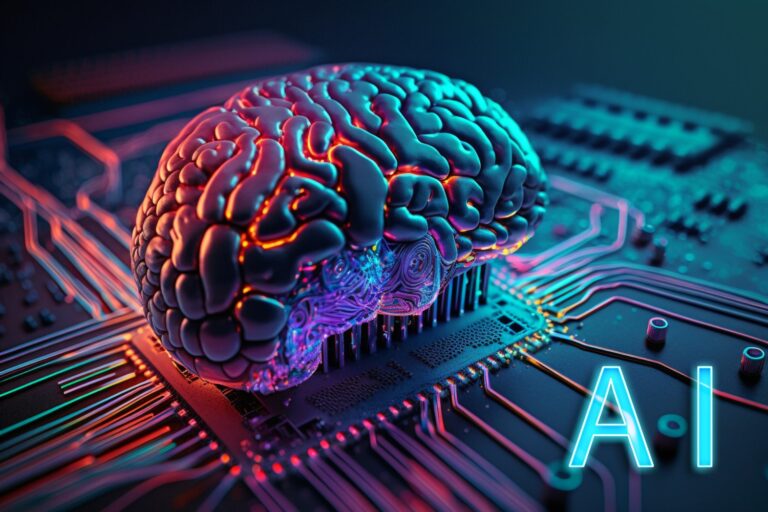By Atoyebi Nike
Artificial Intelligence (AI) is fast becoming an integral part of modern education, transforming how students access knowledge, solve problems, and interact with academic content. From smart tutoring systems to AI-powered research assistants, the technology promises efficiency, convenience, and customization like never before.
But beneath the surface of these advancements lies a growing concern — one that particularly affects students in hands-on, practical disciplines like engineering, medicine, pharmacy, law, architecture, and the applied sciences.
While AI brings undeniable benefits, its unchecked use could, in the near future, undermine the very skills these students need to succeed in the real world. This article explores the looming disadvantages and why students must remain self-reliant and discerning in their use of the technology.
The Double-Edged Sword of AI in Education
There is no denying that AI has revolutionized learning. Students can now receive instant feedback, automate repetitive tasks, and access vast amounts of information with a simple prompt. It has made research faster, tutorials more interactive, and even practical simulations more accessible.
However, the danger arises when AI is used as a substitute for human effort rather than a complement to it. For students whose future professions demand precision, empathy, and hands-on experience, over-dependence on AI could have far-reaching consequences.
1. Decline in Critical Thinking and Deep Learning
AI tools can generate answers, summaries, and even solve complex problems with ease. But when students consistently rely on these tools, they risk skipping the mental processes that build true understanding.
In practical fields, critical thinking is indispensable. An engineer must diagnose system failures under pressure. A doctor must weigh multiple symptoms to make life-saving decisions. If AI becomes the default problem-solver, students may miss out on developing the intellectual rigor required in these situations.
“AI can offer suggestions, but it doesn’t teach the mental discipline that comes from wrestling with a difficult problem yourself,” says Dr. Chinedu Okeke, a senior lecturer in engineering at a federal university in Nigeria.
2. Loss of Hands-On Competence
Simulation tools and virtual labs are valuable for learning, especially in environments with limited resources. But they can never fully replace the tactile, physical experience of working with real equipment, patients, or legal proceedings.
A medical student might learn how to diagnose diseases through an AI-powered system, but without real patient interactions, they may struggle with bedside manner or detecting non-verbal symptoms. Likewise, a pharmacy student dependent on automated compounding systems may not be able to measure or prepare a formulation manually when required.
3. Ethical and Human Disconnect
Fields like law and medicine are not just about logic and data—they’re about people. AI lacks human empathy, cultural context, and moral reasoning.
A future lawyer who has relied on AI to draft legal documents might struggle in court where human dynamics, persuasion, and intuition matter. Similarly, healthcare students might begin to view patients as data points rather than individuals with emotions, backgrounds, and rights.
4. Dependency and Complacency
When AI tools are used to complete assignments, generate research papers, or prepare for exams, students risk becoming passive consumers rather than active learners. Over time, this could foster a culture of intellectual laziness.
The result? Professionals who are book-smart but practically unfit — unable to perform in high-stakes or unpredictable environments where AI might not be present or applicable.
This dependency could result in a generation of professionals who are technically literate but intellectually shallow — unable to perform without digital crutches.
5. Technological Inequality and Exclusion
Not all students have equal access to advanced AI tools. This can further widen the educational gap between those with digital privileges and those without. Students in underfunded schools or rural areas may be excluded from AI-enhanced learning experiences, placing them at a disadvantage in both school and future job markets.
6. Data Risks and Academic Dishonesty
Many AI platforms collect user data, raising concerns about privacy and misuse. Moreover, with tools capable of writing essays or answering exam questions, academic dishonesty becomes a serious risk. Some students may be tempted to bypass genuine learning in favor of quick AI-generated solutions — a decision that will ultimately harm their professional competence.
The Way Forward: Responsible Use and Student Independence
AI is not the enemy. In fact, it can be a powerful ally when used correctly. It enhances productivity, makes learning more inclusive, and supports students with different learning needs. The problem lies in how it is used.
Students, particularly in practical fields, must learn to use AI as a tool, not a crutch. They should engage deeply with their coursework, practice their skills in real-world settings, and cultivate the human attributes—judgment, creativity, empathy, and resilience—that no machine can replicate.
Educators and institutions also have a role to play by designing curricula that balance technology with hands-on learning and by reinforcing the importance of ethics, discipline, and professional accountability.
As artificial intelligence continues to evolve, its place in education is inevitable. But for students in practical and professional disciplines, the challenge is to remain grounded — to embrace innovation without surrendering their own growth.
The future will favor those who can work with technology, not those who depend entirely on it. Master the tools, but master yourself first.
